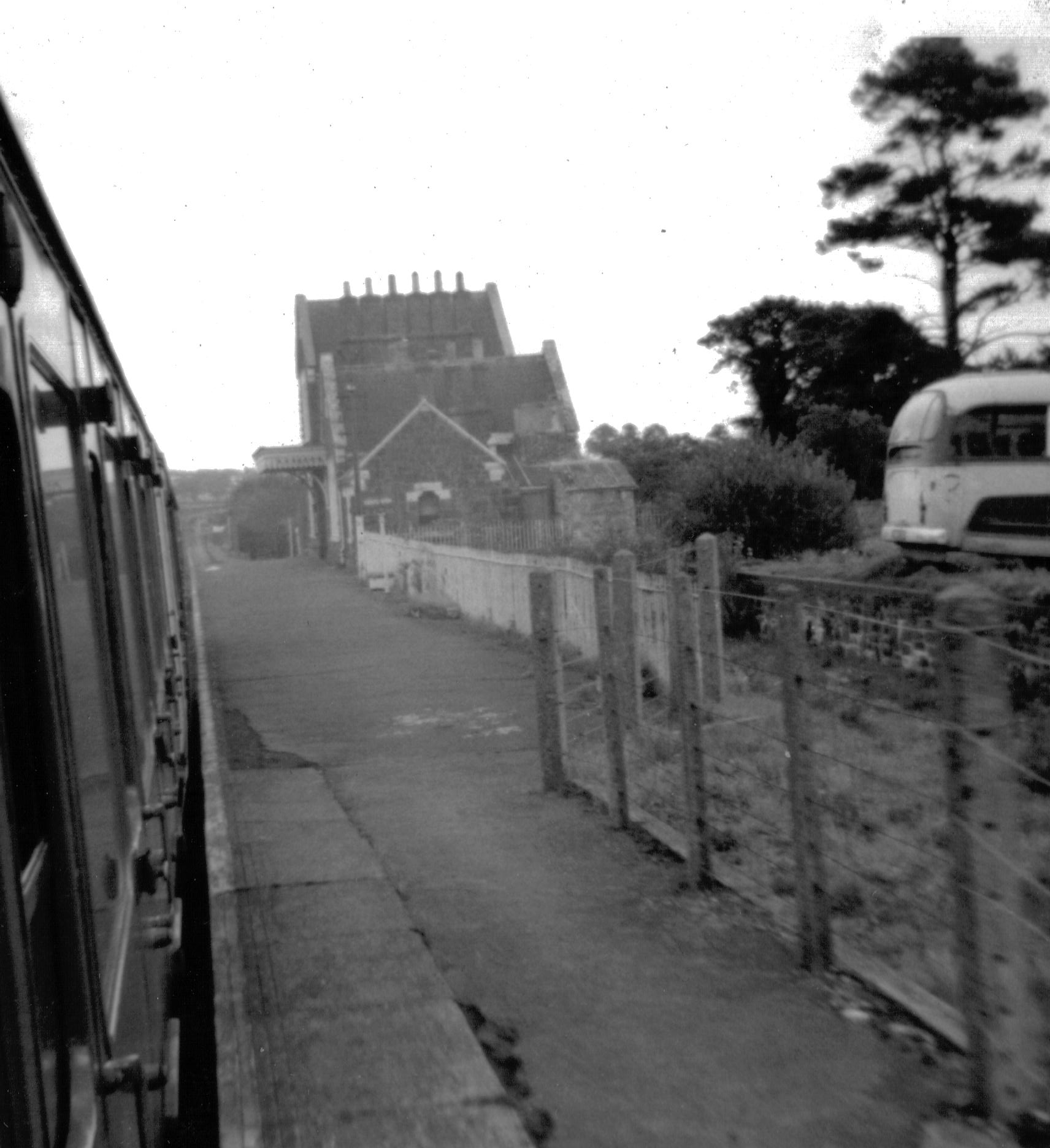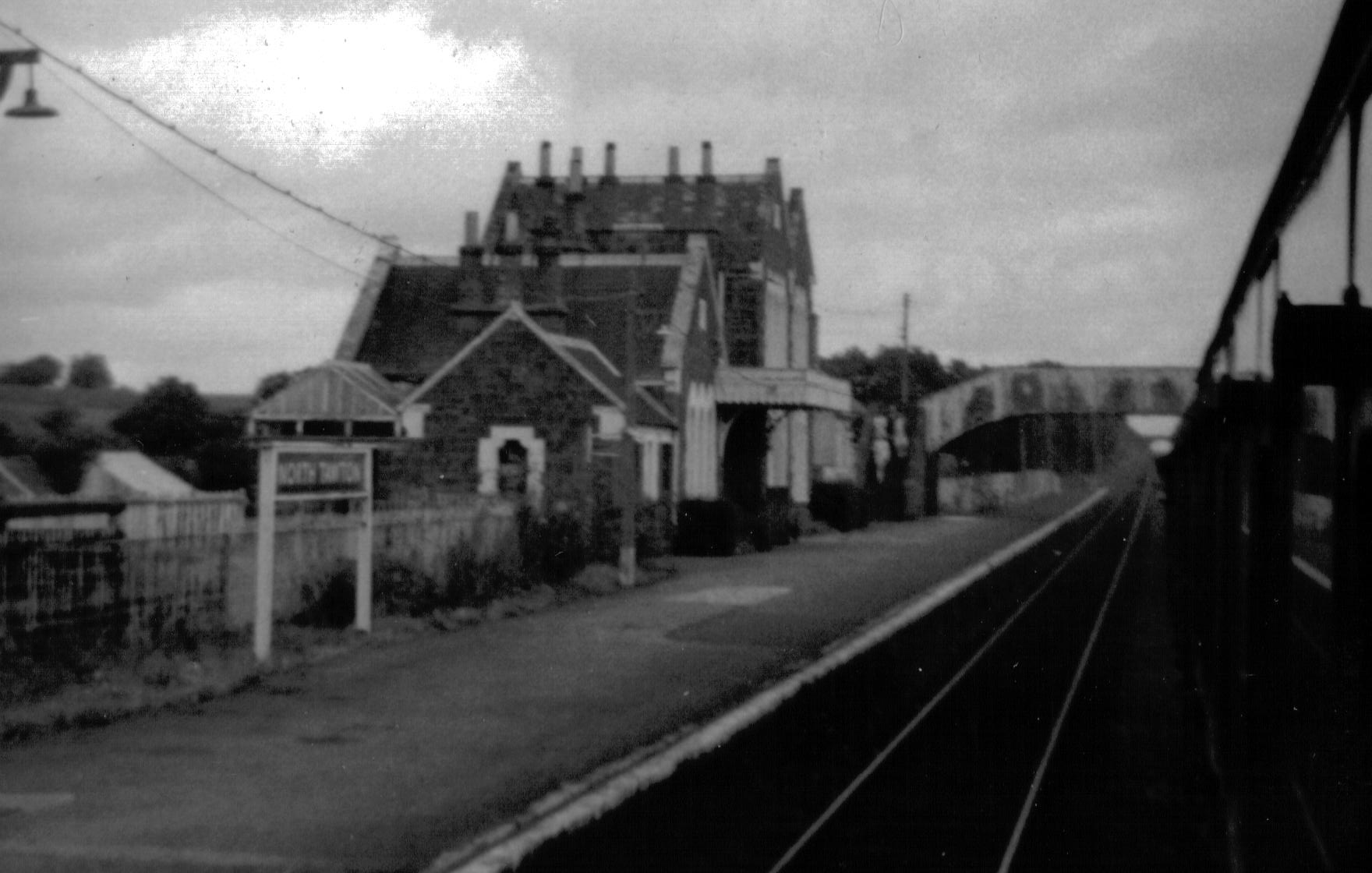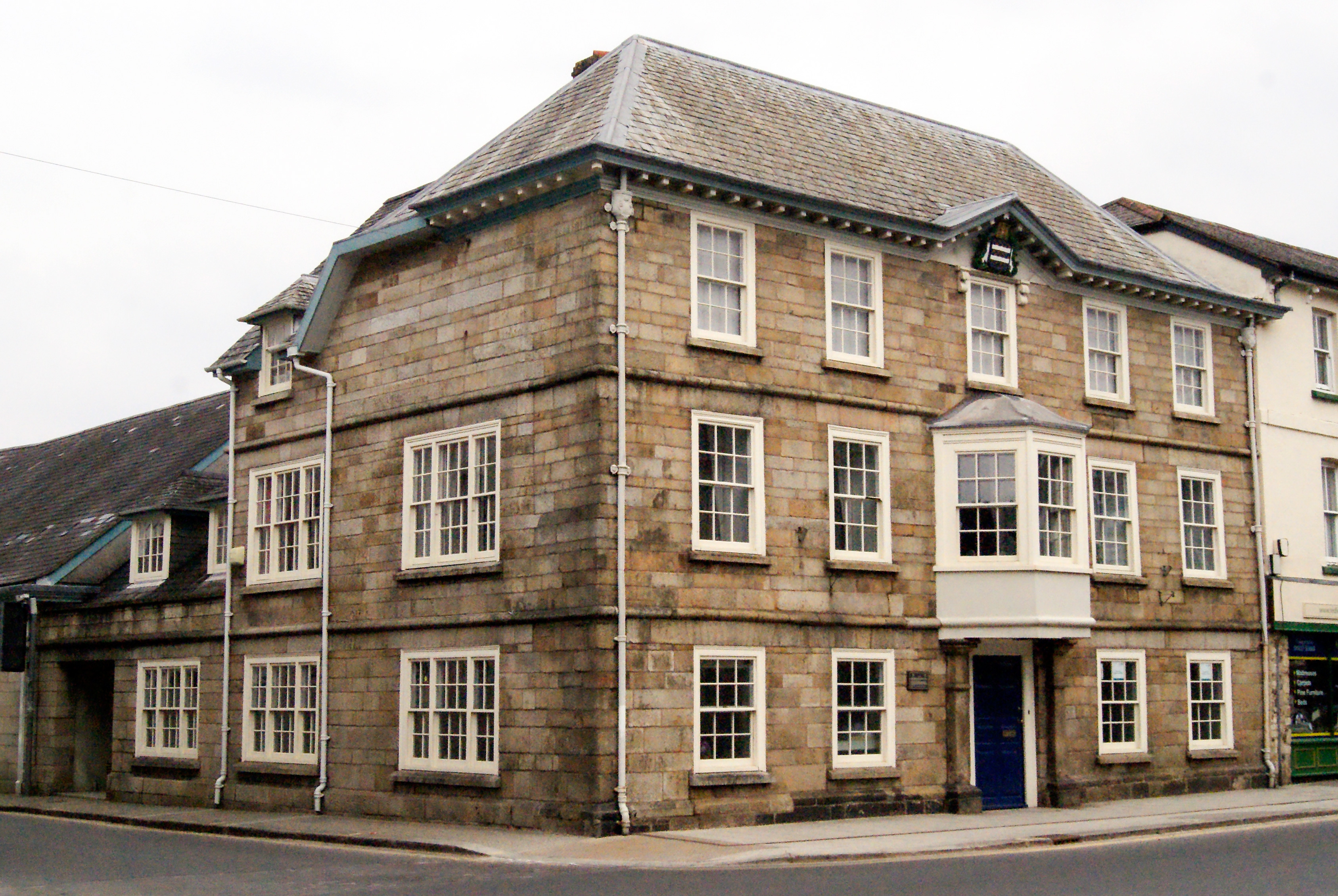|
Bow (Devon) Railway Station
Bow railway station was a railway station serving the village of Bow, Devon, Bow and the hamlet of Nymet Tracy in Devon. Bow lies about 8 miles west of Crediton. History The station was originally opened by the London and South Western Railway (LSWR) in 1865.Nock, O. S. (1965) ''The London & South Western Railway.'' Pub. Ian Allan. London. P. 48. The station building is a two-storey construction of Dartmoor granite with ashlar dressings and round headed windows. The platform canopy has cast iron brackets with a creeper design. There is also a single-storey waiting room and offices. Services on the line were extended further west to Lydford railway station with the inauguration of Meldon Viaduct in 1874. Constructed to rival the South Devon Railway Company, South Devon Railway Exeter to Plymouth line, route to Plymouth, the completion of the LSWR's West of England Main Line, own route to Plymouth saw this line become an important route with lines to Padstow railway station, C ... [...More Info...] [...Related Items...] OR: [Wikipedia] [Google] [Baidu] |
Bow, Devon
Bow () is a village and civil parish in the Mid Devon district of Devon, England, about west of Crediton. According to the 2001 census it had a population of 1,093 practically unchanged at the 2011 Census. There is an adjoining hamlet of Nymet Tracey which shares a church with Bow and much common history. Bow is a major part of Upper Yeo electoral ward. The total ward population at the above census was 1,708. History There is a 3rd millennium BC woodhenge west of the village. Its 19 post holes were discovered by aerial photography in 1984.Shirley Toulson, The Companion Guide to Devon, It is believed to have been a centre of pagan worship for a large area of surrounding countryside. The name ''Nymet'' means "Sacred Grove" in Celtic and is associated in Roman terms with the Druids. The word Nymet is preserved in many surrounding place names (e.g. Nymet Barton, Nymet Rowland, Broad Nymet). The River Yeo, which used to be called the Nymet, flows through the "arched bridge" a ... [...More Info...] [...Related Items...] OR: [Wikipedia] [Google] [Baidu] |
Devonport Kings Road Railway Station
Devonport Kings Road railway station was the London and South Western Railway station in Devonport, Devon, England. It opened in 1876 and closed in 1964. For the first 14 years it was a terminal station with trains to London departing eastwards, but from 1890 it became a through station with trains to London departing westwards. History London and South Western Railway (LSWR) trains first arrived at Plymouth on 17 May 1876, entering the town from the east. To get there trains had travelled over the company's line as far as Lydford railway station, then over the Great Western Railway's Launceston branch via Tavistock and the South Devon main line to Mutley railway station, and then a short section of the Cornwall Railway to reach Devonport Junction near the west end of Pennycomequick Viaduct on the new Cornwall Loop Line. From here trains ran on a short LSWR branch line to its Devonport and Stonehouse terminal. The station was a large building facing Paradise Road near the j ... [...More Info...] [...Related Items...] OR: [Wikipedia] [Google] [Baidu] |
British American Railway Services
British American Railway Services (BARS) was a British locomotive and spot hire company. It was a subsidiary of Iowa Pacific Holdings. The company was established in 2008 to acquire the rail assets of Ealing Community Transport. BARS subsidiaries included RMS Locotec, Hanson Traction, Weardale Railway and Dartmoor Railway The Dartmoor line is a railway line in Devon, England. From , the line runs alongside the Tarka Line to the site of the former Coleford Junction where it diverges west to . Previously a heritage line, it is owned by Network Rail. The route .... BARS also owned Devon & Cornwall Railways which was active from 2011 until 2017. In January 2020 BARS announced that it intended to dispose of all its UK assets. References Rolling stock leasing companies Post-privatisation British railway companies {{UK-company-stub ... [...More Info...] [...Related Items...] OR: [Wikipedia] [Google] [Baidu] |
Aggregate Industries
Aggregate Industries, a member of the Holcim Group, is a company based in the United Kingdom with headquarters at Bardon Hill, Coalville, Leicestershire. Aggregate Industries manufactures and supplies a range of heavy building materials, primarily aggregates such as stone, asphalt and concrete, to the construction industry and other business sectors. Aggregate Industries also manufactures and imports cement, and provides a range of aggregate-associated goods and services, these include the manufacture of masonry and reconstructed stone items for construction industry and domestic applications, the manufacture of pre-cast concrete items, the supply of ready mixed concrete, design and project management consulting, and resurfacing contracting services. Aggregate Industries operates more than 60 quarries in the UK and has several bases throughout mainland Europe and Scandinavia. Its clients operate in a range of services including construction, aviation, education, horticulture, r ... [...More Info...] [...Related Items...] OR: [Wikipedia] [Google] [Baidu] |
Meldon, Devon
Meldon is a hamlet in West Devon, on the edge of Dartmoor in Devon, England. It is 4 km south-west of Okehampton. Its main features are the Meldon Quarry and Meldon Reservoir and the nearby Meldon Viaduct. Quarries Granite is still extracted from Meldon Quarry. The now disused Meldon Aplite Quarry has been designated as a Site of Special Scientific Interest because of its exposures of aplite and other rocks. The Dartmoor Railway terminates at Meldon Quarry; the former continuation of the line to Tavistock and Plymouth continues as a cycle path. The former railway line crosses the West Okement River on the Meldon Viaduct just before reaching the quarry from the west. Reservoir The reservoir was formed by damming the West Okement River. It is about 1.2 km long and 300 metres wide, and extends from the West Okement valley into a small side valley. Firing range Immediately to the south-east is the area of the Okehampton military firing range, which is sometimes closed t ... [...More Info...] [...Related Items...] OR: [Wikipedia] [Google] [Baidu] |
Quarry
A quarry is a type of open-pit mine in which dimension stone, rock, construction aggregate, riprap, sand, gravel, or slate is excavated from the ground. The operation of quarries is regulated in some jurisdictions to reduce their environmental impact. The word ''quarry'' can also include the underground quarrying for stone, such as Bath stone. Types of rock Types of rock extracted from quarries include: *Chalk *China clay *Cinder *Clay *Coal * Construction aggregate (sand and gravel) * Coquina * Diabase *Gabbro *Granite * Gritstone *Gypsum *Limestone *Marble *Ores *Phosphate rock *Quartz *Sandstone * Slate *Travertine Stone quarry Stone quarry is an outdated term for mining construction rocks (limestone, marble, granite, sandstone, etc.). There are open types (called quarries, or open-pit mines) and closed types ( mines and caves). For thousands of years, only hand tools had been used in quarries. In the 18th century, the use of drilling and blasting operatio ... [...More Info...] [...Related Items...] OR: [Wikipedia] [Google] [Baidu] |
Track Ballast
Track ballast forms the trackbed upon which railroad ties (sleepers) are laid. It is packed between, below, and around the ties. It is used to bear the load from the railroad ties, to facilitate drainage of water, and also to keep down vegetation that might interfere with the track structure. Ballast also holds the track in place as the trains roll over it. A variety of materials have been used as track ballast, including crushed stone, washed gravel, bank run (unwashed) gravel, torpedo gravel (a mixture of coarse sand and small gravel), slag, chats, coal cinders, sand, and burnt clay. The term "ballast" comes from a nautical term for the stones used to stabilize a ship. Construction The appropriate thickness of a layer of track ballast depends on the size and spacing of the ties, the amount of traffic on the line, and various other factors. Track ballast should never be laid down less than thick, and high-speed railway lines may require ballast up to thick.Bell 2004, p. 39 ... [...More Info...] [...Related Items...] OR: [Wikipedia] [Google] [Baidu] |
British Rail
British Railways (BR), which from 1965 traded as British Rail, was a state-owned company that operated most of the overground rail transport in Great Britain from 1948 to 1997. It was formed from the nationalisation of the Big Four British railway companies, and was privatised in stages between 1994 and 1997. Originally a trading brand of the Railway Executive of the British Transport Commission, it became an independent statutory corporation in January 1963, when it was formally renamed the British Railways Board. The period of nationalisation saw sweeping changes in the railway. A process of dieselisation and electrification took place, and by 1968 steam locomotives had been entirely replaced by diesel and electric traction, except for the Vale of Rheidol Railway (a narrow-gauge tourist line). Passengers replaced freight as the main source of business, and one-third of the network was closed by the Beeching cuts of the 1960s in an effort to reduce rail subsidies. On privatis ... [...More Info...] [...Related Items...] OR: [Wikipedia] [Google] [Baidu] |
Okehampton Railway Station
Okehampton railway station is a terminus railway station on the Dartmoor line serving the town of Okehampton in Devon, England. The station closed to regular traffic in 1972, but heritage and occasional mainline services ran from 1997 to 2019. Regular railway services resumed in November 2021. History The station opened in 1871 when the London and South Western Railway (LSWR) extended its line from . Services were extended further west to with the inauguration of Meldon Viaduct in 1874. Constructed to rival the South Devon Railway route to Plymouth, the completion of the LSWR's own route to Plymouth saw Okehampton become an important junction with lines to Padstow and as well as . Boat trains carrying passengers from ocean liners calling at Stonehouse Pool, Plymouth and prestige services such as the Atlantic Coast Express and Devon Belle all used the route. From 1960 to 1964 it was the terminus of a car-carrying train from . With the publication of the Beeching Repo ... [...More Info...] [...Related Items...] OR: [Wikipedia] [Google] [Baidu] |
Sampford Courtenay Railway Station
Sampford Courtenay railway station is a disused railway station at Belstone Corner, which used to serve the nearby (1.6 miles) village of Sampford Courtenay in Devon. The village lies 3 minutes away by car or around 30 minutes by foot via the B3215. In 2018–19 it was the least used station in Devon and in the South West and the tenth least used station in Great Britain. In 2020-21 it was the joint least used station in Great Britain with zero passengers. History The station was originally opened by the London and South Western Railway (LSWR) as Okehampton Road when it formed the terminus and it was renamed as Belstone Corner when the line was extended to Okehampton in 1871, and later renamed again as Sampford Courtenay.Nock, O. S. (1965) ''The London & South Western Railway.'' Pub. Ian Allan. London. P. 48. Services on the line were extended further west to Lydford railway station with the inauguration of Meldon Viaduct in 1874. Constructed to rival the South Devon Railwa ... [...More Info...] [...Related Items...] OR: [Wikipedia] [Google] [Baidu] |
North Tawton Railway Station
North Tawton railway station was a railway station serving the town of North Tawton in Devon, England. North Tawton lies on the River Taw. History The station was originally opened by the London and South Western Railway (LSWR) in 1865. Services on the line were extended further west to Okehampton Road by 1867 and then on to Lydford railway station with the inauguration of Meldon Viaduct in 1874. Constructed to rival the South Devon Railway route to Plymouth, the completion of the LSWR's own route to Plymouth saw this line become an important route with lines to Padstow and Bude as well as Plymouth. Boat trains carrying passengers from ocean liners calling at Stonehouse Pool, Plymouth and prestige services such as the Atlantic Coast Express and Devon Belle all used the route. Following the publication of the Beeching Report in 1963, the Exeter to Plymouth Line was cut back to Okehampton in 1968. North Tawton, , Sampford Courtenay and Okehampton lost their regular pass ... [...More Info...] [...Related Items...] OR: [Wikipedia] [Google] [Baidu] |
Okehampton
Okehampton ( ) is a town and civil parishes in England, civil parish in West Devon in the English county of Devon. It is situated at the northern edge of Dartmoor, and had a population of 5,922 at the 2011 census. Two electoral wards are based in the town (east and west). Their joint population at the same census was 7,500. Okehampton is 21 miles (33 km) west of Exeter, 26 miles (42 km) north of Plymouth and 24 miles (38 km) south of Barnstaple. History Okehampton was founded by the Saxons. The earliest written record of the settlement is from 980 AD as , meaning settlement by the Ockment, a river which runs through the town. It was recorded as a place for slaves to be freed at cross roads. Like many towns in the West Country, Okehampton grew on the medieval wool trade. Notable buildings in the town include the 15th century chapel of James, son of Zebedee, St. James and Okehampton Castle, which was established by the Normans, Norman High Sheriff of Devon, Sherif ... [...More Info...] [...Related Items...] OR: [Wikipedia] [Google] [Baidu] |
_station_geograph-3268556-by-Ben-Brooksbank.jpg)




.jpg)


